
The Squeeze Theorem Applied to Useful Trig Limits
Suggested Prerequesites:
The Squeeze Theorem,
An Introduction to Trig
There are several useful trigonometric limits that are necessary for
evaluating the derivatives of trigonometric functions. Let's start by
stating some (hopefully) obvious limits:
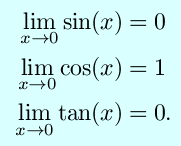
Since each of the above functions is continuous at
x = 0, the value of the limit at
x = 0 is the value of the function at
x = 0; this follows from the definition of limits.
In order to evaluate the derivatives of
sine and
cosine we need to evaluate

In order to find these limits, we will need the following theorem of
geometry:
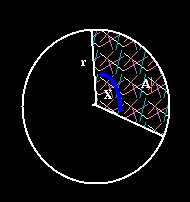
If x is the measure of the central
angle of a circle of radius r, then the area A of
the sector determined by x is
A = r2x/2
Let's start by looking at

 If
If

we have the situation in the figure to the left. Assume the circle is
a unit circle, parameterized by
x = cos t,
y = sin t
(for the rest of this
page, the arguments of the trig functions will be denoted by
t instead of x, in an attempt to reduce
confusion with the cartesian coordinate).
 If A1 is the area of the triangle
AOP, A2 is the area of the circular
sector AOP, and A3 is the area of the
triangle AOQ,
If A1 is the area of the triangle
AOP, A2 is the area of the circular
sector AOP, and A3 is the area of the
triangle AOQ,
A1 <
A2 < A3.
The area of a triangle is equal to one-half of the product of the base
times the height. Using this well-known result, and the above theorem
for the area of a sector of a circle (with t as the central
angle), we obtain:
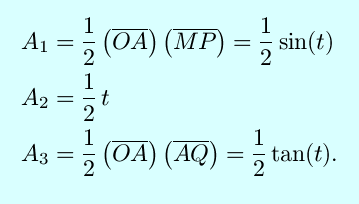
It follows that

and hence

which is equivalent to

These three functions are easily plotted; the yellow line is the plot
of the constant function 1, the magenta is the cosine, and the red is
sin(t)/t.
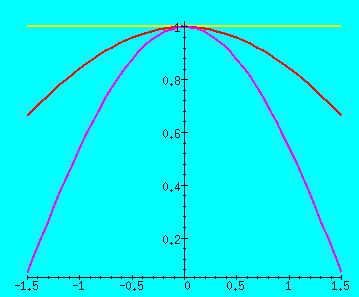
From the Squeeze Theorem, it follows
that

To find

we do some algebraic manipulations and trigonometric reductions:
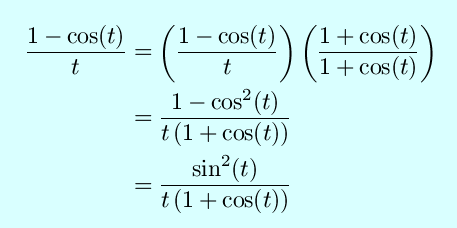
Therefore, it follows that

To summarize the results of this page:
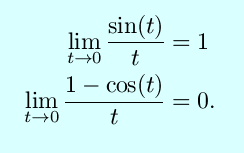
Back to the Calculus page |
Back to the World Web Math top page
watko@mit.edu
Last revised August 21, 1998.






 If
If

 If A1 is the area of the triangle
AOP, A2 is the area of the circular
sector AOP, and A3 is the area of the
triangle AOQ,
If A1 is the area of the triangle
AOP, A2 is the area of the circular
sector AOP, and A3 is the area of the
triangle AOQ, 








